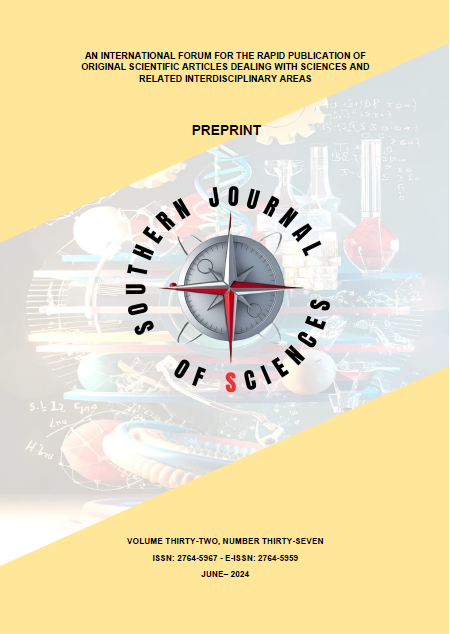INTERVIEW WITH DEPUTY VICE CHANCELLOR DR. O. A. OMOTESHO, UNIVERSITY OF ILORIN, NIGERIA (ENGLISH VERSION)
Background: The University of Ilorin, founded in 1975 in Nigeria, has evolved from 3 to 16 faculties, becoming the country's most sought-after institution for the past two decades. Aims: To document the institutional evolution, identify the most demanded programs, assess scientific output, examine internationalization strategies, and understand strategic development objectives. Methods: Structured interview with Vice-Chancellor Dr. Olubumi Abayomi Omotesho, following a standardized protocol covering historical, academic, scientific, and strategic aspects of the institution, under Creative Commons license format. Results: The university expanded to 16 faculties in 49 years. The most demanded programs are Medicine and Nursing, followed by Pharmacy, Law, Engineering, and Accounting. Areas with the highest scientific output: Medicine, Biological/Agricultural Sciences, and Engineering. It offers 340 postgraduate programs with approximately 7,523 students. There is a dedicated infrastructure for internationalization, with plans for international accommodations. Discussion: The predominance of healthcare courses reflects global employability trends. Research aligned with Sustainable Development Goals demonstrates a contemporary vision. The institutional goal (number one in Nigeria, top 10 in Africa, top 500 globally) shows a measurable strategic approach. Commitment to internationalization aligns with global education trends. Conclusions: The institution exemplifies an evolving African university focused on academic excellence, scientific relevance, and internationalization. The prioritization of student-centered development, clear positioning goals, and international collaboration initiatives establish solid foundations for its contribution to regional and global knowledge.
Read ArticleFROM AIR FORCE TO HYPERSONIC FUTURE: ÉLCIO GERÔNIMO DE OLIVEIRA'S JOURNEY IN BRAZILIAN AEROSPACE DEVELOPMENT (ENGLISH VERSION)
Introdução: A entrevista com Élcio Gerônimo de Oliveira, conduzida pelo repórter Luis, apresenta a trajetória profissional de um pesquisador brasileiro com experiência na Força Aérea Brasileira e no meio acadêmico, com foco em sistemas espaciais e veículos hipersônicos. Objetivos: Documentar a carreira e contribuições de Élcio para o desenvolvimento aeroespacial brasileiro, destacando sua transição da carreira militar para a acadêmica e sua participação em projetos estratégicos, especialmente o projeto 14X. Métodos: A entrevista foi estruturada em blocos temáticos, abordando a carreira militar, a experiência acadêmica e, com maior detalhamento, o envolvimento no projeto do veículo hipersônico 14X. Foram realizadas perguntas abertas, permitindo ao entrevistado compartilhar sua experiência e conhecimento técnico. Resultados: Élcio descreveu sua progressão na Força Aérea Brasileira, desde pesquisador até vice-chefe da Diretoria de Espaço, destacando o desenvolvimento de veículos lançadores, sistemas de navegação inercial e o projeto SARA. Relatou sua transição para a carreira acadêmica, incluindo sua experiência como professor na Universidade de Luleå, na Suécia. Élcio detalhou sua coordenação no projeto 14X, um veículo hipersônico que alcançou Mach 7, com perspectivas de atingir Mach 10. Discussão: A entrevista revela a importância da cooperação internacional e da transferência de tecnologia, exemplificada pela doação do primeiro laboratório de hipersônica do Brasil. Evidencia também os desafios técnicos na construção de veículos hipersônicos e o potencial dessas tecnologias para aplicações militares e civis. Conclusão: A carreira de Élcio Gerônimo de Oliveira exemplifica a contribuição brasileira para pesquisa aeroespacial avançada, demonstrando a capacidade nacional de desenvolver tecnologias estratégicas como veículos hipersônicos, apesar das limitações de recursos, e apontando possibilidades futuras para o transporte e exploração espacial.
Read ArticleTHE REVOLUTION IN AMERICAN PUBLIC HEALTH POLICY: PETROLEUM-BASED DYES AND THE CHRONIC DISEASE EPIDEMIC
Background: The American food regulatory landscape has historically been influenced by industry interests, resulting in the widespread use of petroleum-derived synthetic food dyes banned in European countries. Chronic disease rates in American children have increased from 3% in the 1960s to approximately 60% currently, with annual healthcare costs reaching $1 trillion. The appointment of Robert F. Kennedy Jr. as Secretary of Health and Human Services marks a paradigmatic shift toward transparency and industry accountability in food safety regulation. Aim: This forum analysis examines Kennedy Jr.'s revolutionary approach to food safety regulation, particularly his confrontational stance against petroleum-based food additives exemplified by his statement, "if they want to eat petroleum, they should add it themselves at home" and evaluates the broader implications for American public health policy and global regulatory standards. Methods: Critical analysis of Kennedy Jr.'s public policy statements, examination of epidemiological data trends, and evaluation of proposed regulatory frameworks through content analysis of official speeches and policy declarations from the Department of Health and Human Services. Results: Kennedy Jr.'s administration targets the systematic elimination of synthetic food dyes through industry partnerships, scientific transparency initiatives, and restoration of rigorous research standards. His confrontational rhetorical approach, compared to Mike Tyson's boxing style, has generated unprecedented industry cooperation with food companies "calling almost daily" seeking compliance guidance. The strategy combines voluntary industry agreements with open-source information databases and enhanced FOIA access. Discussion: This confrontational rhetoric represents unprecedented directness in health policy communication, challenging decades of established regulatory practices. The approach prioritizes scientific transparency over diplomatic language, generating both media attention and voluntary industry engagement that traditional regulatory pressure failed to achieve. Conclusions: Kennedy Jr.'s revolutionary stance may establish new global standards for food additive oversight, prioritizing public health over commercial interests through evidence-based policymaking and industry accountability measures. This paradigm shift from reactive to preventive regulatory models could influence international food safety governance and restore American leadership in global health policy.
Read Article